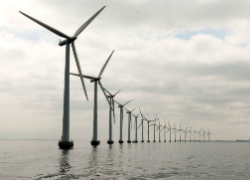The New York Times Editorial Board recently published an article explaining the need for greater transparency and stricter environmental regulations in trade agreements. The Times missed the opportunity to explain the history of international trade and investment agreements and their tenuous relationship to sustainable development.
With globalization has come greater intergovernmental cooperation, increased trade, and a widening global middle class. However, globalization has also created greater environmental degradation, increased emissions of greenhouse gases, and the exploitation of labor in developing countries. Given the positive and negative consequences associated with globalization, governments and non-governmental organizations have acknowledged the need to align global trade with sustainable development. Recent bilateral investment treaties and model investment treaties have acknowledged sustainable development as a primary objective. Yet the trend towards large multilateral trade agreements has cast doubt on whether sustainable development will remain a priority.

Bilateral investment treaties proliferated during the 1970s through 1990s. Developing nations entered into these treaties under the theory known as the Washington Consensus: that allowing foreign investment and lowering trade barriers would ultimately lead to economic growth, raise quality of life, and reduce poverty. Developing nations became wary of this logic once the perils of a free-market became apparent and investors pulled out of regions following a rise in wages. These countries have begun incorporating greater protections on human rights and the environment in addition to acknowledging the right of the State to legislate in the best interest of the public.
There is some doubt as to the efficacy of bilateral investment treaties for attracting investment. There is scant data showing that they increase investment, and little that they do to enforce obligations. The Trans-Pacific Partnership (TPP) and Transatlantic Trade and Investment Partnership (TTIP) illustrate the trend towards homogenizing trade regulation through multilateral agreements. While this is generally positive for international trade, concerns remain.
The TPP has been negotiated in secret, and what has leaked has caused concern for many observers. It seems that a predominant goal is to lower trade barriers while protecting the interests of large companies. Investor protection provisions demonstrate how companies may challenge legitimate regulations made for environmental or ecological concerns. Additionally, while environment and human rights have been addressed in negotiations, those issues have not been a priority and there is little to suggest that they will get the robust enforcement needed.
For sustainable development to remain a priority in international trade, there must be a concerted effort to weave the principles of sustainability into the purpose of multilateral trade agreements. However, this is not sufficient to ensure sustainable development will continue. Local governments must hold businesses accountable to their communities and resist a race to the bottom. Most importantly, businesses must commit to sustainable development in practice and not simply pay it lip service. Such action will result in a mutually beneficial relationship between businesses and the communities in which they operate.
Alex Milgroom is a 3L at the University of Denver and the Online Editor-in-Chief of the Denver Journal of International Law and Policy
***
This article is based on an academic paper by the author available here.

